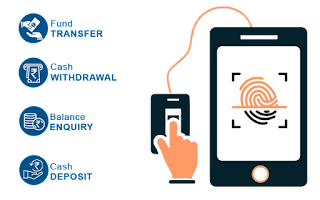How Is a Mini ATM Machine Different from a Regular ATM?
Mini ATM machines have proved an ideal tool to deal with the cash crunch due to the demonetization drive. These machines are easy to carry and portable and thus are suitable for people living in remote locations to withdraw cash. They only need to link their bank accounts with their Aadhaar card to access the micro ATM facilities. These machines also address the issues related to a deficient number of ATMs located in villages. Read this blog to know how they are different from regular ATMs.
What Are the Key Differences between Micro ATMs and Regular ATMs?
Every one of us is
familiar with the term ‘ATM.’ It stands for automatic teller machine, an
electronic banking device that enables consumers to perform financial
transactions. They can deposit and withdraw cash, transfer funds, and inquire
about account balance without any help from bank staff.
Most ATMs have
keypads, card readers, printers, cash dispensers, and screens. So, if you have
a debit or credit card, you will be able to access cash at any ATM. Also,
because ATM services are available 24/7, you can withdraw some money even in
the middle of the night.
On the other hand, a
micro ATM is a portable and miniature form of an ATM. They can be called
handheld POS (point of sales) machines that allow the users to connect to the
banking network via general packet radio service (GPRS) to carry out financial
transactions. Unlike regular ATMs, you will be required to undergo iris or
fingerprint verification while using mini ATM machines.
The main difference is
that while regular ATMs are usually installed at fixed locations, authorized
merchants and bank representatives carry micro ATMs to rural areas. That
professional will do the basic cash-in and cash-out functions. But, you will
not need to pay any service charge for the transactions.
How Are the Transaction Procedures Different?
There are also
differences in the transaction procedures of the two.
When you visit a
regular ATM, you have to swipe your debit card first so that the ATM can read
it and ask you to enter the PIN. After that, you will be given options like
cash withdrawal, balance inquiry, cash deposit, etc. After you choose your
option, you have to select your account type. Once that step is completed, you
can now enter the amount you want to withdraw.
But when you use mini
ATMs, the bank representative will ask you for your Aadhaar number. It will
serve as the identity proof required for cash withdrawal. Next, you will need
to undergo biometric identification, following which you will be provided with
transaction options. Note that no Aadhaar authentication or biometric
verification is associated with regular ATM operations.
Final Words
The operational and maintenance costs of micro ATM machines are much lower compared to that of regular ATMs. Because they are portable, they serve as the perfect solution for areas with no regular ATMs. Also, if you face any issue with the ongoing transactions, the bank representative will always be there to help you deal with the situation.
.jpg)

Comments
Post a Comment